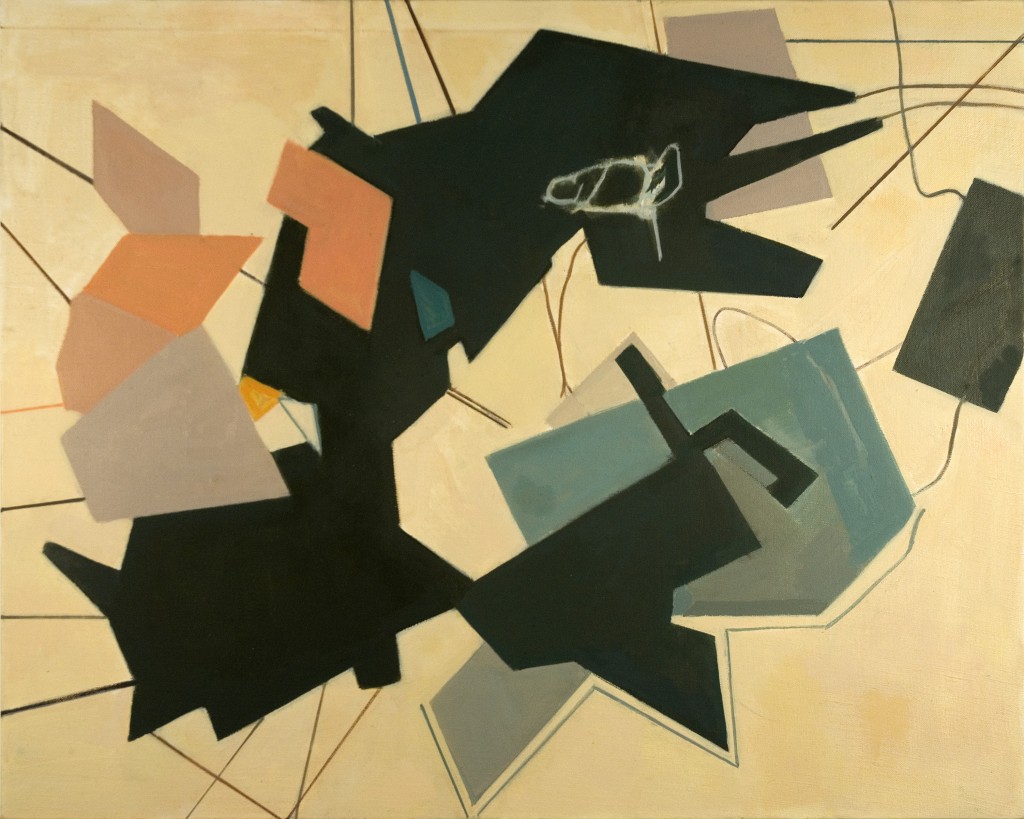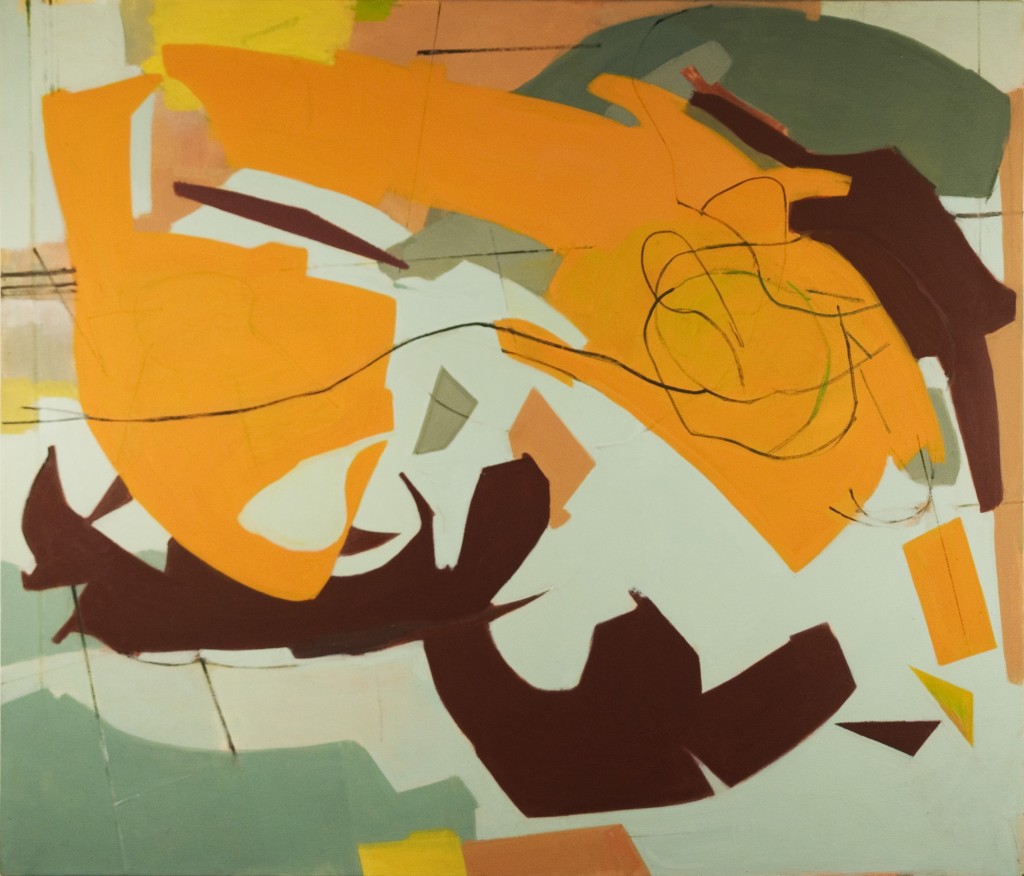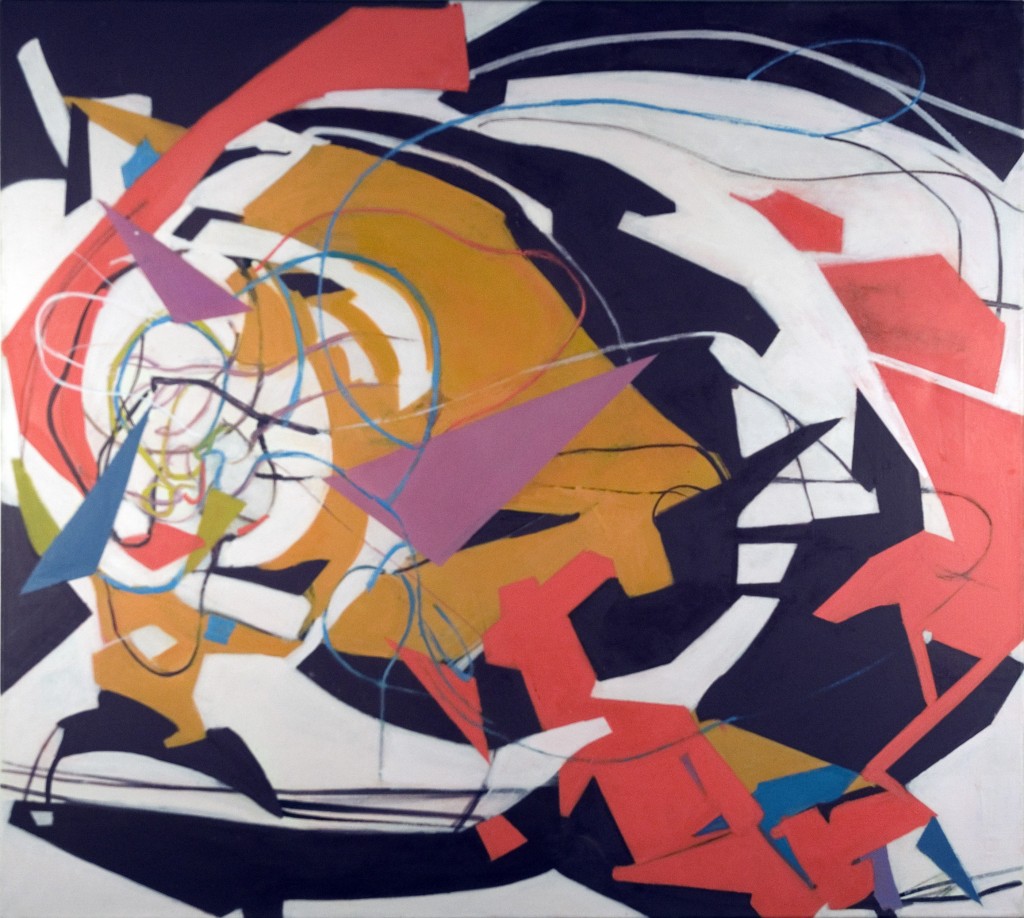Trying to reconstruct a story or place for a friend can amount to sharing photos on social media, piecing together images of sound and color, or perhaps withdrawing from the challenge altogether with a you had to be there. Elizabeth Hazan’s new paintings at Janet Kurnatowski Gallery in Greenpoint offer a medium of story reproduction that refuses to be co-opted into either a visual or textual narrative. Hazan employs memory not as a device for rote recall, but as a method of and for creative catalyzation itself:
“Retaining some pure shapes, such as squares and triangles allows me to set up formal relationships that are the dynamic of geometric abstraction, and helps create a dialogue between rational and invented forms. These collages lead to paintings where I become both cartographer and painter, invoking both kinds of navigation: that of our experience and in the reproduced substitutions that maps represent.”[1]
The landscapes of her travels form the background of her artistic process, a process which seeks reconciliation between “the experience of travel” and “visual representations of landscapes.” Her investment in the project of memory and geographical reproduction lends itself to the notion that there is something that always remains to be explored between the landscapes we think we know and the memory, however that memory may evolve or change, attached to those landscapes. On the inspiration for her project, Hazan says: “On the walk to my Brooklyn studio, the brightly printed neighborhood maps are present at almost every street corner and the contrast between these simplified flat diagrams and the actual jumble of the hectic city is something I find endlessly fascinating. Both influence memory. The relationship between the experience of travel and visual representations of landscape has become central to my work.”[2]
For Hazan, moving from point A to point B sounds or looks linear, but feels multi-dimensional. It’s precisely this discrepancy between appearance and reality—between the geographical distance of two points on a map and the emotional distance created in the actual process of their traversing—that her paintings try to capture. Emblematic of maps coming to life so to speak, the paintings of “Are We There Yet?” showcase the evolution of this multi-dimensionality, and force us to think about the ways in which we see our own journeys past and present. It’s in this way that her process itself brings to light memory’s visual force; its capacity, in other words, is not relegated to be a tool in helping us think of the past, but of the ways in which our past can inform our present and our future. In Hazan’s case, one aspect of memory’s potential is in its ability to redraw, and thus redefine, the cartography of our geographical landscapes and to question the ways we walk, pause, think, speak, and act while en route from one place to another.
“Are We There Yet?” can be viewed at Janet Kurnatowski Gallery at 205 Norman Ave in Greenpoint, Brooklyn through April 27th. Further information can be found at www.janetkurnatowskigallery.com. – Amie Zimmer All images courtesy of Janet Kurnatowski Gallery and the artist






























